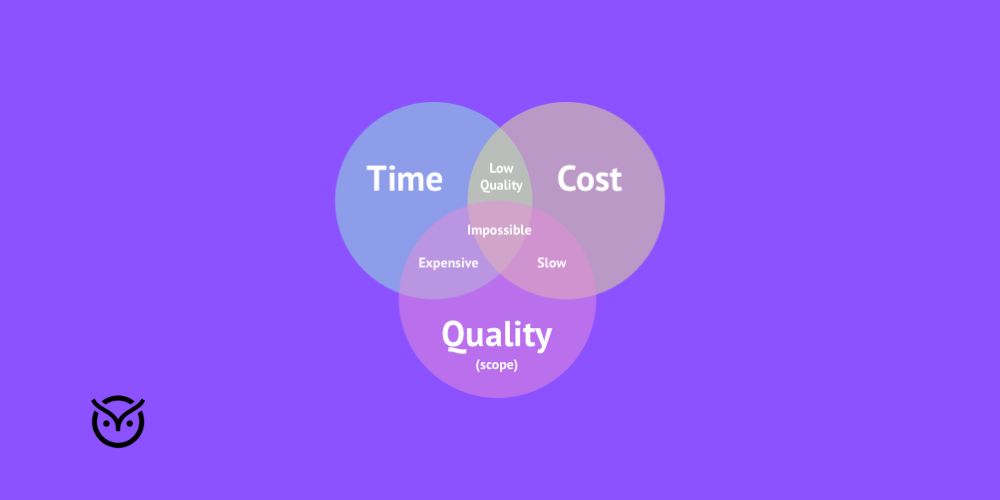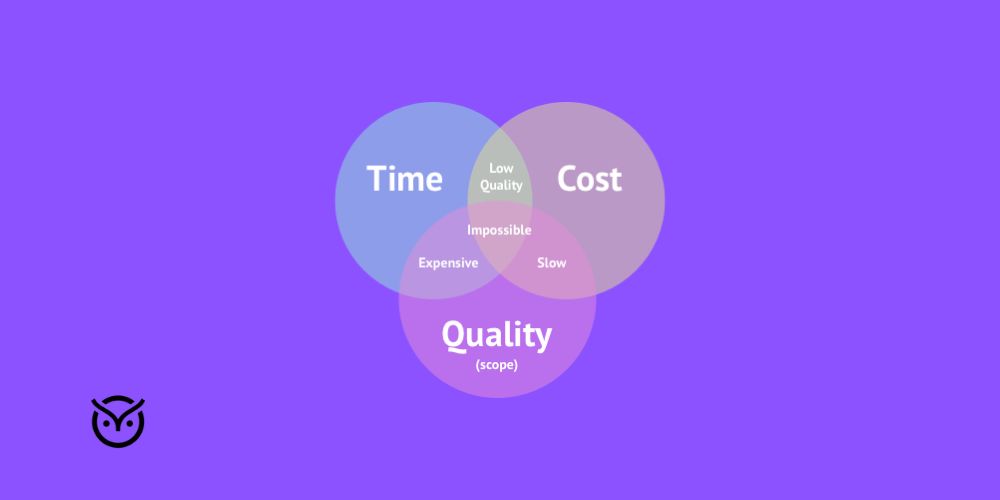
TL;DR
- Speed without sacrifice: accelerate hiring without losing quality of candidates
- Use efficient recruitment tools for recruiters to trim wasted time
- Track time-to-hire, cost-per-hire, and quality of hire to measure effectiveness
- Apply assessment tools for recruitment and selection early to filter the right fit
- Optimize your recruitment process, balancing speed and care
Hiring fast is tempting. Your company has roles open, work is piling up, and teams are stretched thin. But rushing through hiring often means letting mediocre or mismatched hires slip through. This is why recruitment efficiency matters: you want hiring completed quickly and correctly so the business doesn’t suffer from bad fit, slow onboarding, or frequent turnover.
The good news is you can strike that balance. With the right efficient recruitment process, using smart tools, good metrics, and deliberate steps, HR leaders can improve recruitment in a way that keeps pace without harming quality. In this blog, you will learn how to balance speed and quality, what to measure, and which practices help you sharpen your hiring.
What Is Recruitment Efficiency?

Recruitment efficiency means getting hires done well using minimal wasted time, energy, or money. It’s not about hiring anyone just to fill seats. It’s about filling roles with the right people, fast and without compromising quality.
This involves having an efficient recruitment process with clear job definitions, screening steps that catch misfits early, using tools that reduce manual effort, and keeping communication smooth. It means using things like assessment tools for recruitment and selection to evaluate candidates rigorously while also avoiding bottlenecks that drag hiring out.
The Challenge: Speed vs. Quality in Hiring
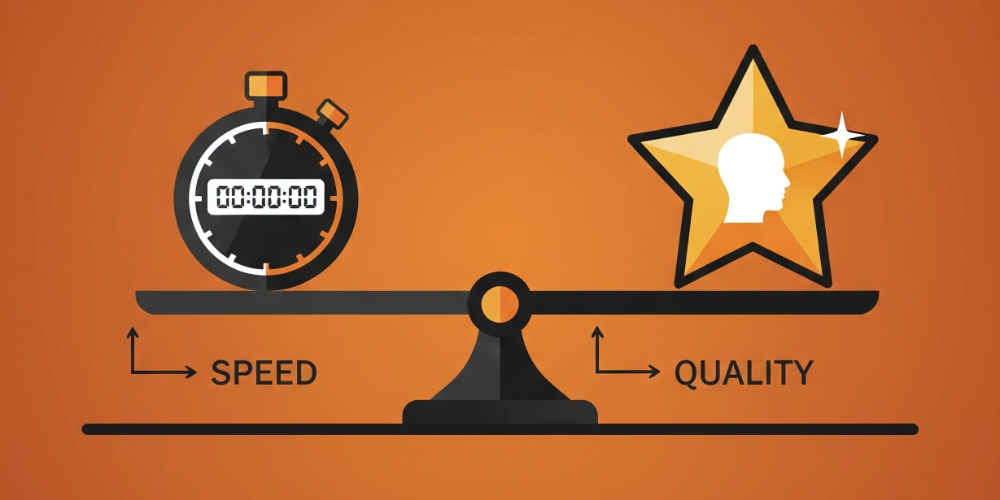
HR leaders often face a tug-of-war: hiring fast vs hiring right. Push too hard for speed and you might end up with bad fits, higher turnover or unhappy teams. Focus too much on quality (long interview rounds, many assessments) and you lose good candidates who take other offers or build up costs and delays.
Some data helps paint this. For example, organizations that use staffing agencies report reductions in time-to-hire by up to 50%. At the same time, many HR teams say that time-to-hire has been increasing: in 2024, 60% of companies reported an increase in their time-to-hire. Too many delays can mean lost opportunities.
The Challenge: Speed vs. Quality in Hiring — Trade-Off Puzzle
You have 3 days to fill a role. Which path do you choose?
Why this matters
- Speed can reduce vacancy costs but increases mismatches and rework.
- Quality protects performance and retention but may lower offer acceptance if cycles drag.
- Balanced hiring uses time boxes, structured screens, and clear decision gates.
How HR Leaders Can Balance Speed and Quality

Here are action steps HR can take to balance speed and quality in hiring, using, or building on recruitment efficiency:
Define clear job criteria early
Write precise job descriptions, define must-have vs nice-to-have skills. This prevents wasting time on candidates who aren’t a close match. Helps you evaluate the professional staffing you need.
Use pre-screening and assessment tools
Incorporate assessment tools for recruitment and selection to catch mismatches quickly. Use short skills tests and structured interviews. This speeds up quality filtering.
Streamline the recruitment funnel
Evaluate each stage of your recruitment funnel: which stages slow you down? Which are redundant? Remove or combine steps where possible without lowering standards.
Put in place efficient recruitment tools for recruiters
Tools that automate resume parsing, candidate tracking, and interview scheduling. These reduce manual work and let HR focus on higher-impact tasks.
Set expectations with hiring managers
Align with business leaders on how fast is acceptable vs. what quality means if managers demand many rounds or have shifting requirements that slow down speed.
Monitor and adjust continuously
Use metrics (more on this later) to see where delays or quality issues arise. Tweak the process. For example, if candidates are dropping off mid-assessment, see why and adjust.
Maintain candidate experience
Even if you’re speeding up, keep people informed and respectful. A good candidate experience helps maintain reputation and can reduce drop-outs.
The Role of AI and Automation in Recruitment Efficiency

Technology has become the HR leader’s strongest ally. AI and automation are no longer optional because they’re the backbone of the hiring process optimization. Resume parsing tools can scan thousands of applications in seconds, and they can select only the best-fit profiles. Chatbots now handle first-round candidate queries, scheduling, and even basic screening, freeing recruiters to focus on higher-value work.
AI also helps evaluate professional staffing needs of an organization more accurately. Instead of relying on instinct, leaders can use data-driven insights to forecast talent gaps and build smarter hiring plans. This shift is not just about speed as it helps improve fairness, consistency, and the overall quality of candidates moving through the process.
Automation also reduces drop-off rates. Candidate engagement platforms send reminders, follow-ups, and status updates automatically. This means fewer missed interviews and a smoother experience. In short, AI ensures your recruitment process optimization is sustainable and scalable without burning out recruiters.
The Role of AI and Automation in Recruitment Efficiency — Automation Match Game
Drag each AI tool to the correct function. On touch devices, tap a tool, then tap a function.
AI Tools
- Resume parsing
- Chatbots
- Predictive analytics
Functions
- Shortlist best resumes
- Handle FAQs and scheduling
- Forecast staffing needs
Key Metrics HR Leaders Should Track
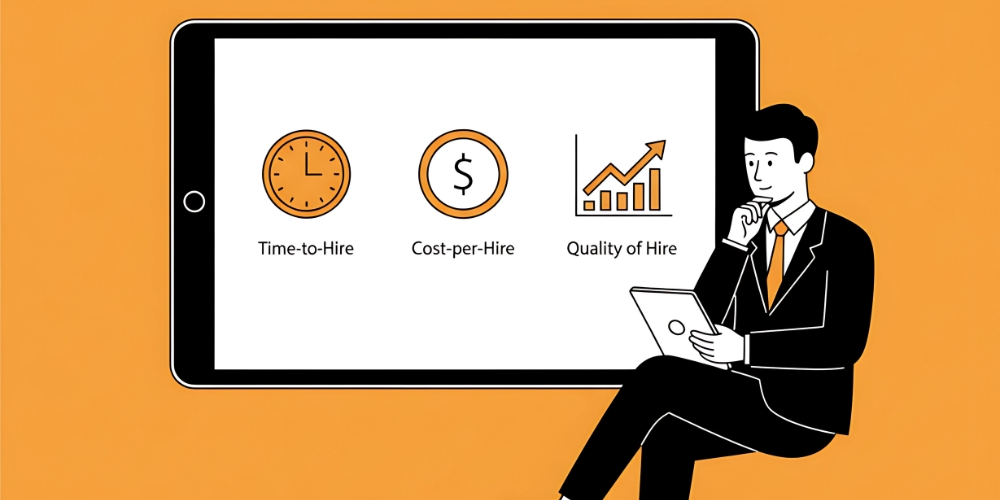
You can’t improve what you don’t measure. To truly know how to measure hiring effectiveness, HR leaders need to track both speed and quality indicators.
Here are the essentials:
- Time-to-hire: Measures how quickly candidates move through the process. If this is too high, you risk losing top talent.
- Cost-per-hire: Captures the financial efficiency of your recruitment efforts. Lower isn’t always better if it sacrifices quality.
- Quality of hire: Perhaps the most important. Are new employees hitting performance benchmarks, staying longer, and contributing well? This is the ultimate measure of the quality of candidates you’re bringing in.
- Candidate experience scores: Gather feedback through surveys. A poor experience damages your employer brand, even if the hire is successful.
- Source of hire: Tracks which channels (job boards, referrals, internal mobility) deliver the best results.
- Offer acceptance rate: High declines can signal delays and lead to poor communication or uncompetitive offers.
Best Practices for Recruitment Efficiency
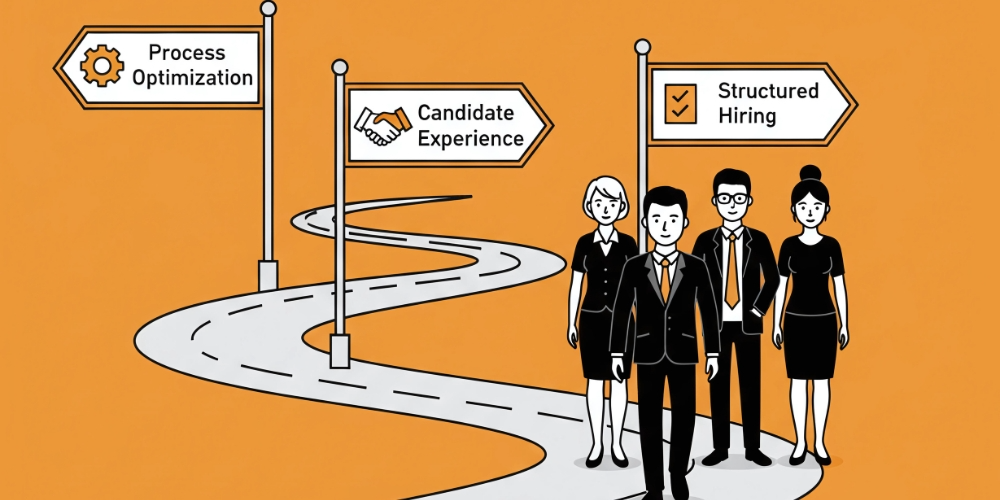
Getting recruitment efficiency right takes more than technology and metrics. It requires discipline, structure, and adaptability. These are some practices that leading HR teams adopt:
Design a 360 recruitment strategy
Instead of patchwork fixes, create a complete approach that integrates sourcing, selection, onboarding, and retention. This holistic method reduces duplication and accelerates results.
Map and refine the recruitment funnel
Evaluate bottlenecks in your recruitment funnel. If interviews are dragging, shorten them. If sourcing channels aren’t yielding results, pivot quickly.
Standardize processes but allow flexibility
Use templates and structured interviews to save time. But adapt where unique roles require creativity.
Leverage efficient recruitment tools for recruiters
Tools for video interviews, applicant tracking, and automated assessments help reduce manual work. These upgrades directly improve recruitment outcomes.
Invest in training hiring managers
Recruiters aren’t the only ones responsible for efficiency. Train managers on decision-making, structured evaluation and timely communication.
Focus on long-term hiring success
Short-term speed is meaningless if turnover spikes later. Pair fast screening with rigorous assessment tools for recruitment and selection to secure talent that sticks.
Continuously review data
Make it routine to revisit performance metrics, adapt your recruitment process, and re-align with evolving business needs.
Best Practices for Recruitment Efficiency — Efficiency Roadmap Quiz
Q1. Do you currently use an ATS?
Q2. Do you measure candidate experience regularly?
Your Roadmap Result
Conclusion
Balancing speed with quality isn’t just a dream. It’s achievable with the right mindset, process, and tools. But even the most disciplined HR leaders can feel stretched thin between business pressures and candidate expectations. This is where Vettio comes in.
Vettio offers a platform purpose-built for recruitment efficiency. Its AI-driven tools automate repetitive tasks, deliver predictive insights into candidate fit, and enable smarter hiring process optimization. From sourcing to onboarding, Vettio makes the recruitment process leaner without cutting corners on quality. The result? Faster hires, stronger candidates, and more bandwidth for HR leaders to focus on strategy.
FAQs
How can HR balance speed and quality in hiring?
By defining clear criteria, using efficient recruitment tools for recruiters and monitoring key metrics. Speed comes from automation while quality comes from structured evaluation. Balance both and you’ll win.
What tools improve recruitment efficiency?
Applicant tracking systems, AI powered screening platforms, automated scheduling and assessment tools for recruitment and selection all help. These cut manual work and maintain quality.
Which metrics matter most?
The big ones are time to hire, cost per hire and quality of hire. Do not forget candidate experience and offer acceptance rates when assessing recruitment efficiency.

